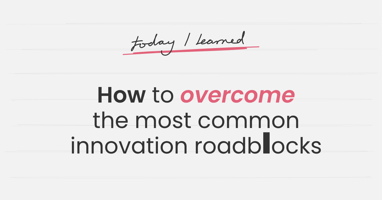Editor's note: This is the third and final post in a series of three blog posts over the past weeks. Read part one and part two of this series.
Previously, I mentioned a sea change that is happening around corporate survival and the ability to operate in our new norm environment of continuous change. I would like to share how some of the global companies with whom I work are making great progress to transform their Annual Operating Planning cadence (AOP).
Today's companies are truly global in many ways. That said, I am often shocked to learn our Enterprise Innovation Performance platform is often the first software to be deployed across the entire organization. It is normal for our customers to have multiple versions of ERP, CRM systems and multiple manufacturing supply chain systems, but I digress. Operationally and from an infrastructure standpoint most companies are wired globally. The basic capabilities are in-place to use technology to dramatically reduce the time it takes for companies to go through their AOP process.
We have learned in working with our customers that it is possible to reduce AOP from 12 months to 90 days by enabling the AOP process with the proper technology. The technology, however, assumes some critical operating requirements: it must be the single source of truth for innovation strategy as well as initiatives planning and the single source of truth for operational projects. Our customers require a sophisticated and smart application behind the scenes and a very easy to use, intuitive user interface. Think of it as SAP-like on the back and Facebook-like on the front but all of the inner workings have one singular purpose which is Enterprise Innovation Performance. With that singular purpose in mind, technology can jump start the AOP process by pre-populating plans with last year's plans, improve the ease with which planners modify and edit existing plans and improve the collaboration, sharing and iteration of such plans.
The real beauty is in the sophisticated “smart” technology that relates the strategic plans and initiatives to the operational activities on the fly. This prevents anyone from reassigning operational resources off critical strategic initiatives and onto operational priorities without the visibility or knowledge. Speaking of knowledge, I have been working with companies for over 20 years on Knowledge Management principles and I get absolutely jazzed about seeing companies finally getting big wins because they are managing their knowledge to improve innovation in ways we have never done in the past.
For those looking to break your trend of poor execution against your innovation initiatives we should chat. Yes folks, Knowledge Management is back but instead of companies expecting search engines to make Knowledge Management a reality, they are transitioning to “smart” systems where Knowledge Management is becoming a part of our daily operational activity. A passion of mine for years.





